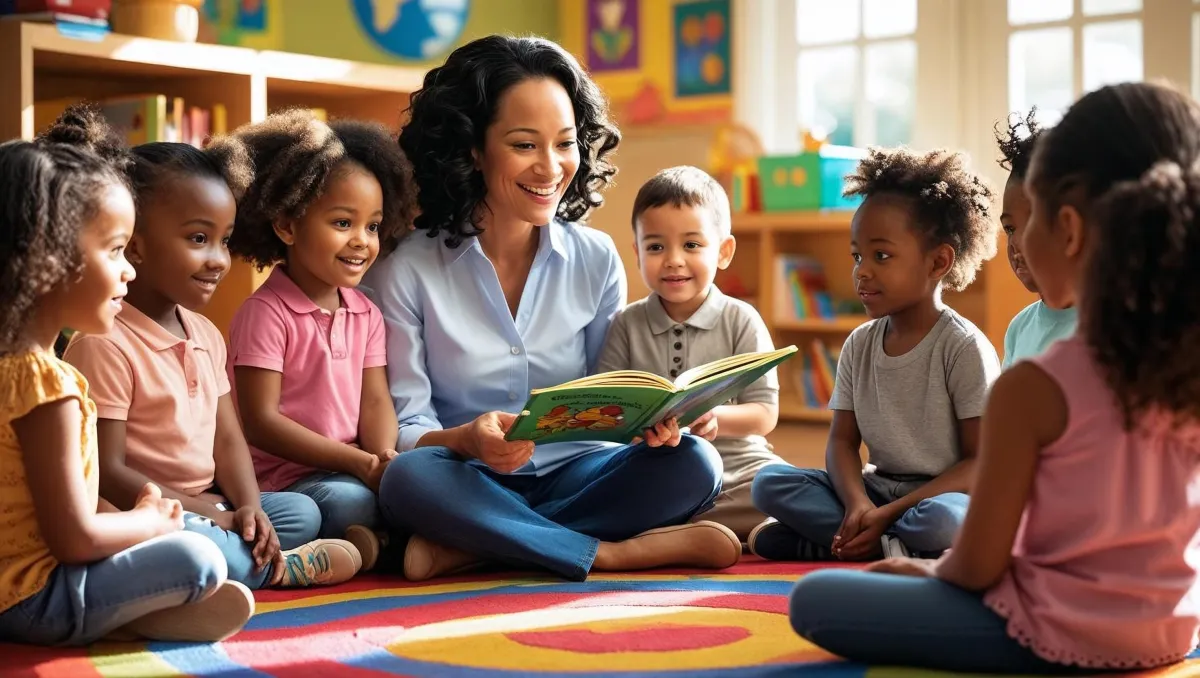
Rethinking Circle Time
Circle time has been a staple in early childhood classrooms for decades. For many teachers, it’s a daily ritual—a time to gather all the children together and introduce letters, numbers, colors, or shapes. Flashcards often make their entrance, and children are expected to stay seated, quietly absorbing the teacher's presentation. While this traditional approach to circle time is well-intentioned, it’s time for educators to rethink its purpose.

Young children aren’t built to sit still and listen for long stretches, and that’s okay—it’s not how they learn best. By reimagining circle time as a space for movement, connection, and interactive discussions, teachers can better align this practice with the needs of young children and engage them in ways that stick.
Why Sitting Still Isn't the Key
We know that young children have limited attention spans. Research shows that a 3-year-old’s attention span can last just about 6–9 minutes, while a 4-year-old may stretch it to about 8–12 minutes. Traditional approaches to circle time, like reciting the days of the week or showing flashcards, often expect children to remain static and attentive for longer periods than they are developmentally prepared to handle.
What happens when children are asked to sit quietly too long? Restlessness, disengagement, and a reluctance to participate can take over. The brain craves dynamic interaction, and children learn best when they are moving, exploring, and engaging their whole selves in the process.
Movement and Interaction: The Game Changers
To hold young children’s attention longer and make learning meaningful, circle time needs to become more active and interactive. Movement and engagement shouldn’t be “extras”—they should be central components of the circle time experience.
Here are just a few ways to revitalize your circle time:
Sing Action-Packed Songs
Incorporate songs with motions, like “If You’re Happy and You Know It” or “Head, Shoulders, Knees, and Toes.” These combine physical movement with language in a way that engages young minds and bodies. Even if you play some of the awesome remixes of these songs that are on YouTube, engaging the children in the movements that go with those songs - and not relying on the video to do that for you - can dramatically change the game. Nothing can replace you interacting with the song with them. That is the key to making this work.
Movement-Based Games
Try games like “Simon Says” or “Colors Hunt,” where children move around the room to find something that matches a color or shape you call out. These types of games encourage children to listen and follow directions, which is a skill we are always working on with them.
Interactive Story Telling
Instead of reading a book while children sit quietly, make the story interactive. Pause to ask questions, encourage the kids to repeat key phrases, or invite them to act out scenes. These activities don’t just hold children’s attention—they also strengthen their memory, boost communication skills, and foster a deeper connection to the material.
Circle Time as a Launchpad for Collaboration
Another way to rethink circle time is to shift its focus entirely. Instead of treating it as your main academic instruction time, use it as a gathering space where children can connect, share, and prepare for the day ahead. Think of circle time as a time to set the tone. It can be used for:
Building Community
Start each day by inviting children to share something about themselves, check in on how they’re feeling, or acknowledge each other’s accomplishments. This fosters a sense of belonging and emotional awareness.
Events of the Day
Give an overview of the schedule—highlighting fun, engaging parts of the day—so children know what to expect. This also helps reduce transitions by giving everyone a shared understanding of the routine.
Problem-Solving Discussions
Use circle time to collaboratively address classroom challenges like cleaning up toys or taking turns. Encourage children to offer their ideas, instilling confidence and teamwork.
If you reserve major academic lessons for small groups or centers, circle time can become a stress-free, relationship-building experience.
Learning Can Happen Everywhere
One of the biggest shifts early childhood educators can make is realizing that academic learning doesn’t have to happen at circle time—or even in one set time. It can take place throughout the day in small, intentional group activities or during play. For instance:
Center Enhancements
Want kids to explore patterns? Set up a math-themed center with manipulatives. Interested in letter recognition? Create an alphabet scavenger hunt during free play.
Small Group Work
Divide children into smaller groups for hands-on activities. Mixing paint colors to create new ones can teach science concepts, while crafting block towers introduces problem-solving and measurement.
By weaving academic learning into play and small group work, children stay active and interested, and the pressure to "get it all done" during circle time is reduced.
Shaping the Future of Circle Time
It’s time to stop thinking of circle time as a quiet, sit-still academic session and start seeing it for what it can truly be—a time to engage, build community, and spark joy. By rethinking your approach and focusing on movement, interaction, and connection, you’ll create an experience that not only aligns with how young children learn but also helps you build a thriving, energetic classroom.
Circle time can be so much more than just a check-the-box routine. It can be the heart of your day, where kids are excited to participate, collaborate, and grow. Try out some new, dynamic ideas in your classroom, and watch the magic happen. Have strategies of your own that work for circle time? Share them in the comments below—we’d love to hear what you’re doing to rethink this cherished classroom ritual!
